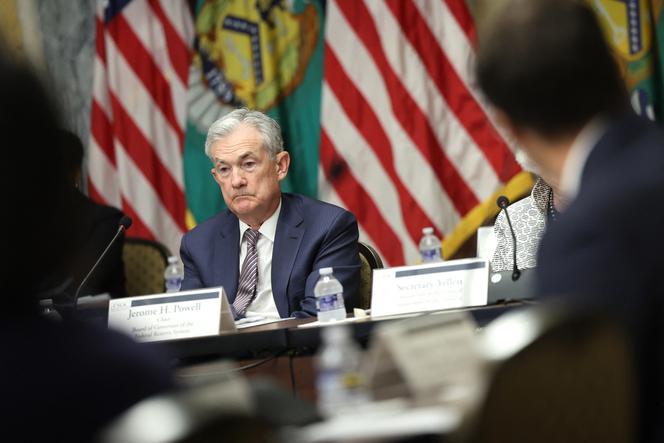


Inflation, now running at a steady 2.4%, is undoubtedly under control in the US, but interest rates, on course to break market records, are not. On Thursday, August 17, the yield on 10-year Treasury bonds hit its highest level since 2007, at 4.329%. This is higher than the peak in October 2022, at 4.24%. This trend is hitting American households hard, as the rate on 30-year mortgages has reached 7.09%, according to figures released by mortgage giant Freddie Mac. This level, the highest since 2002, has more than doubled in 18 months.
This surge was accentuated by Wednesday's publication of the minutes of the latest meeting of the US Federal Reserve's Monetary Policy Committee. It shows that at the end of July, central bankers were not ruling out a further increase in the Fed's key rates. Between March 2022 and July 2023, Fed rates have risen from zero to over 5.25%.
"With inflation still well above the Committee’s longer-run goal and the labor market remaining tight, most participants continued to see significant upside risks to inflation, which could require further tightening of monetary policy," although "a number of participants" called for the committee to "balance the risk of an inadvertent overtightening of policy against the cost of an insufficient tightening."
Strong sales at Walmart supermarkets and good employment figures confirm the inflationary pressures exerted by US consumers. The markets, which thought the rate hike was over, are now betting 30% on a further increase in the cost of money at the Fed's November 1 meeting.
The US is accordingly entering a scenario no one had really envisaged: interest rates will remain high for a long time to come, after the decade of free money that followed the great financial crisis of 2008, amplified by the Covid-19 pandemic. This foreseeable development is leading to a move away from equities: why take risks by buying shares in companies when you can get returns of over 4% by investing in risk-free government bonds?
What's more, the rise in the cost of money is going to weigh on the earnings of debt-financed companies, the notorious return of financial expense which is wiping out the bottom line. As a result, since its July peak, the S&P 500 index of large companies has lost 5.16%, while the technology-rich Nasdaq is down 7.8%.
Wall Street's two flagship indices are still up 13.8% and 27.3% respectively since the start of the year, but the bright skies of July have turned stormy in August. Is the economy experiencing a simple financial squall, after the return of optimism due to falling inflation and enthusiasm for artificial intelligence? Or are we entering a more uncertain world, with the economic decoupling of the US from China and costly climate disruption?
You have 35.22% of this article left to read. The rest is for subscribers only.
